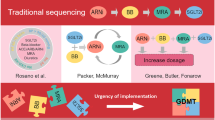Abstract
Paucity of data has led to a lack of consensus regarding indications for, and risk–benefit ratio of, low molecular weight heparin ‘bridging’ for cardioembolic prevention in patients with atrial fibrillation (AF) until their INR levels are in therapeutic range. Using a hospital database, we compared AF patients ≥65 years who were bridged (n = 265) with patients who were not bridged (n = 4532) after hospital discharge. Patients who failed to achieve a therapeutic INR within 30 days were excluded. CHADS2 scores (congestive heart failure, hypertension, age ≥75, diabetes, stroke), bleeding risk and co-morbidity scores were assessed. Unadjusted and adjusted odds ratios for outcome events (death, stroke, hemorrhage and venous thromboembolism (VTE) within 30 days of discharge were compared. Bridged patients, as compared to those not bridged, were younger (74.7 ± 6.6 vs. 78.5 ± 7.7 years), less likely to be white (36 vs. 51%), and less likely to have CHADS2 scores ≥2 (67 vs. 84%), all P < 0.001. There was no significant difference in bleeding risk (bridged vs. not bridged: 1.5 ± 7 vs. 1.7 ± 6). In logistic models adjusting for age, white race, bleeding risk, CHADS2 and Comorbidity scores, bridging was significantly associated with lower mortality and a decreased odds ratio for VTE (both P < 0.01) but not for stroke or hemorrhage (both P > 0.80). Although we found insufficient evidence of either lower stroke or greater bleeding risk with bridging, our data suggest the possibility that LMWH bridging in patients with AF is associated with lower risks of VTE and death within 30 days of discharge.

Similar content being viewed by others
References
Gage BF, Waterman AD, Shannon W, Boechler M, Rich MW, Radford MJ (2001) Validation of clinical classification schemes for predicting stroke. Results from the National Registry of Atrial fibrillation. JAMA 285:2864–2874
Schneeweiss S, Maclure M (2000) Use of comorbidity scores for control of confounding in studies using administrative databases. Int J Epidemiol 29:891–898
Zhu H, Hill MD (2008) Stroke: the Elixhauser index for comorbidity adjustment of in-hospital case fatality. Neurology 71:283–287
Beyth RJ, Quinn LM, Landefeld CS (1998) Prospective evaluation of an index for predicting the risk of major bleeding in outpatients treated with warfarin. Am J Med 105:91–99
Piazza G, Goldhaber SZ (2003) Periprocedural management of the chronically anticoagulated patient: critical pathways for bridging therapy. Crit Pathw Cardiol 2:96–103
Dunn AS, Spyropoulos AC, Turpie AGG (2007) Bridging therapy in patients on long term oral anticoagulants who require surgery: the Prospective Peri-operative Enoxaparin Cohort Trial (PROSPECT). J Thromb Haemost 5:2211–2218
Dunn A (2006) Perioperative management of oral anticoagulation: when and how to bridge. J Thromb Thrombolysis 21:85–89
Kovacs MJ, Kearon C, Rodger M, Anderson DR, Turpie AG, Bates SM, Desjardins L, Douketis J, Kahn SR, Solymoss S, Wells PS (2004) Single-arm study of bridging therapy with low-molecular-weight heparin for patients at risk of arterial embolism who require temporary interruption of warfarin. Circulation 110:1658–1663
Douketis JD, Johnson JA, Turpie AG (2004) Low-molecular-weight heparin as bridging anticoagulation during interruption of warfarin: assessment of a standardized periprocedural anticoagulation regimen. Arch Intern Med 164:1319–1326
Spyropoulos AC, Turpie AG, Dunn AS, Spandorfer J, Douketis J, Jacobson A, Frost FJ (2006) REGIMEN investigators clinical outcomes with unfractionated heparin or low-molecular-weight heparin as bridging therapy in patients on long-term oral anticoagulants: the REGIMEN registry. J Thromb Haemost 4:1246
Halbritter KM, Wawer A, Beyer J, Oettler W, Schellong SM (2005) Bridging anticoagulation for patients on long term vitamin K antagonists. A prospective 1 year registry of 311 episodes. J Thromb Haemost 3:2823–2825
Stein PD, Hull RD, Matta F, Yaekoub AY (2009) Anticoagulants for acute venous thromboembolism: what we think we know and what the data show for timing of recurrent events. Clin Appl Thromb Hemost 15:609–612
Garcia DA, Regan S, Henault LE, Upadhyay A, Baker J, Othman M, Hylek EM (2008) Risk of thromboembolism with short-term interruption of warfarin therapy. Arch Intern Med 14(168):63
Dunn AS, Spyropoulos AC, Turpie AG (2007) Bridging therapy in patients on long-term oral anticoagulants who require surgery: the Prospective Peri-operative Enoxaparin Cohort Trial (PROSPECT). J Thromb Haemost 5:2211–2218
Wysokinski WE, McBane RD, Daniels PR, Litin SC, Hodge DO, Dowling NF, Heit JA (2008) Periprocedural anticoagulation management of patients with nonvalvular atrial fibrillation. Mayo Clin Proc 83:639
Hammerstingl C, Tripp C, Schmidt H, von der Recke G, Omran H (2007) Periprocedural bridging therapy with low-molecular-weight heparin in chronically anticoagulated patients with prosthetic mechanical heart valves: experience in 116 patients from the prospective BRAVE registry. J Heart Valve Dis 16:285–292
Omran H, Hammerstingl C, Paar WD (2007) Bonn registry of alternative anticoagulation to prevent vascular events. perioperative bridging with enoxaparin. Results of the prospective BRAVE registry with 779 patients. Med Klin (Munich) 102:809–815
Audebert HJ, Schenk B, Tietz V, Schenkel J, Heuschmann PU (2008) Initiation of oral anticoagulation after acute ischaemic stroke or transient ischaemic attack: timing and complications of overlapping heparin or conventional treatment. Cerebrovasc Dis 26:171–177
Amin A, Stemkowski S, Lin J, Yang G (2007) Thromboprophylaxis rates in US medical centers: success or failure? J Thrombos Haemost 5:1610–1616
Vallano A, Arnau JM, Miralda GP, Perez-Bartoli J (2004) Use of venous thromboprophylaxis and adherence to guideline recommendations: a cross-sectional study. Thrombosis J 2:3
Acknowledgments
This publication was made possible by the CTSA Grant UL1 RR025750, KL2 RR025749 and TL1 RR025748 from the National Center for Research Resources (NCRR), a component of the National Institutes of Health (NIH), and NIH roadmap for Medical Research. Its contents are solely the responsibility of the authors and do not necessary represent the official view of the NCRR or NIH. We also gratefully acknowledge Eran Bellin MD, PhD for the development and availability of Clinical Looking Glass.
Disclosures
The authors report that they have nothing to disclose.
Author information
Authors and Affiliations
Corresponding author
Rights and permissions
About this article
Cite this article
Billett, H.H., Scorziello, B.A., Giannattasio, E.R. et al. Low molecular weight heparin bridging for atrial fibrillation: is VTE thromboprophylaxis the major benefit?. J Thromb Thrombolysis 30, 479–485 (2010). https://doi.org/10.1007/s11239-010-0470-8
Published:
Issue Date:
DOI: https://doi.org/10.1007/s11239-010-0470-8




